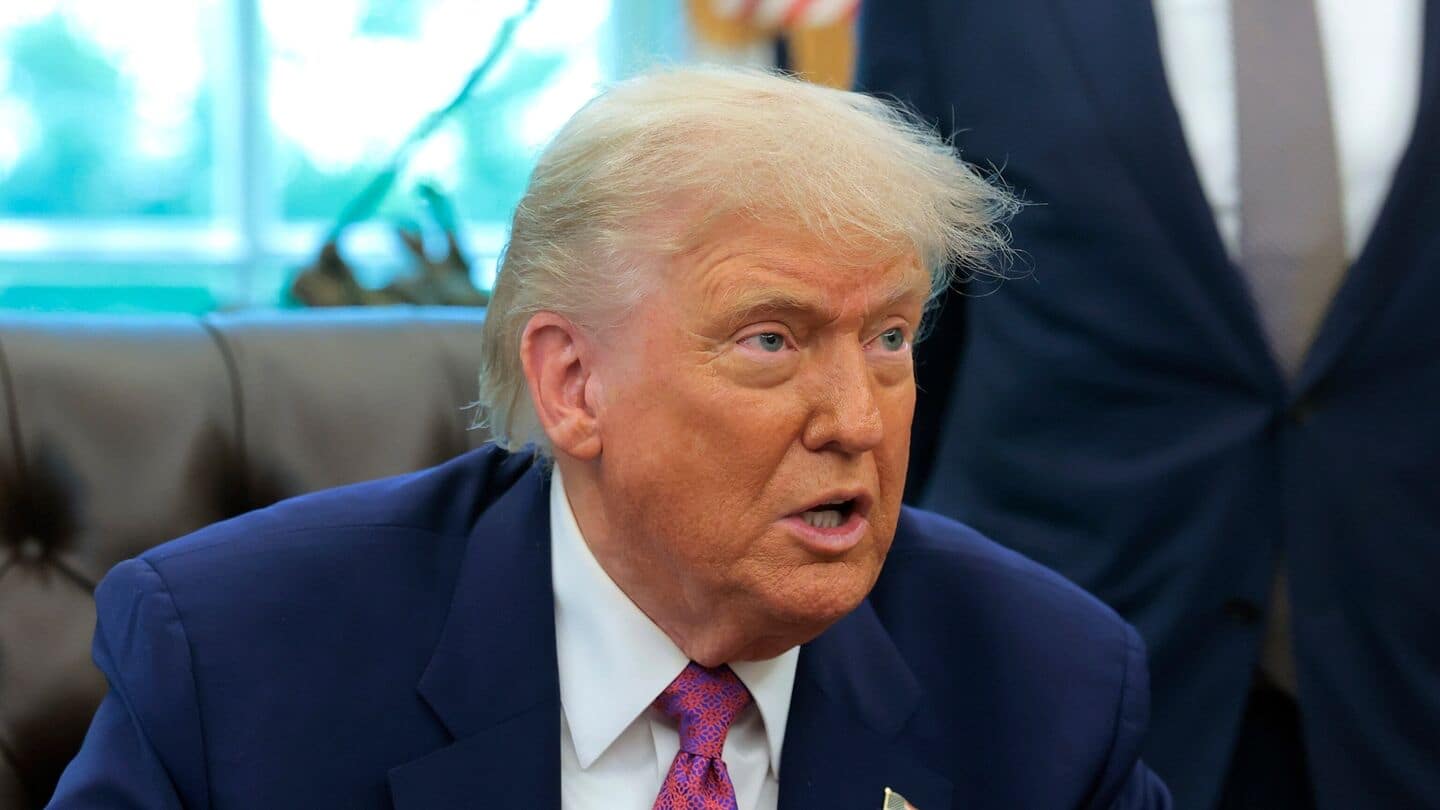
Trump's strike on Iranian sites complicates uranium tracking: Nuclear watchdog
What's the story
President Donald Trump's order to strike three key Iranian nuclear sites as part of "Operation Midnight Hammer" may have damaged Iran's atomic capabilities, but it has also made tracking uranium more difficult. Trump claimed the heavily fortified sites were "totally obliterated;" however, independent verification is still pending. Satellite images taken by Maxar Technologies show new craters and possible collapsed tunnel entrances at Fordow, but no radiation leaks were reported, Bloomberg reported.
Site evaluation
At Natanz, a new crater was spotted on satellite images
At Natanz, a new crater, about 5.5 meters in diameter, was spotted on satellite images, but it remains unclear if the attack penetrated the site, buried 40 meters underground and reinforced with an 8-meter-thick concrete and steel shell. US Air Force General Dan Caine said assessing "final battle damage will take some time." Similarly, the International Atomic Energy Agency (IAEA) said it is still trying to assess damage at these sites.
Stockpile mystery
Before US intervention, Israeli forces had limited success
For more than a week, IAEA investigators have been unable to determine the whereabouts of the Persian Gulf country's stockpile of near-bomb-grade uranium. Iranian authorities acknowledged breaking IAEA seals and transporting them to an undisclosed destination. There is a slim possibility that the US entering the war will convince Iran to increase IAEA cooperation, said Darya Dolzikova, a senior research fellow at the Royal United Services Institute, a London-based think tank.
Tracking challenge
Tracking nearly 9,000kg of enriched uranium will be hard now
The IAEA's primary role is to keep track of uranium globally and ensure it isn't used for nuclear weapons. However, the recent bombing has made this task more difficult. Tariq Rauf, former head of the IAEA's nuclear-verification policy, said tracking nearly 9,000kg of enriched uranium will be hard now. The bombing also destroyed tools that monitors could use for forensic detection of potential uranium diversion.
Ceasefire appeal
IAEA has called for a ceasefire to address the situation
The IAEA has called for a ceasefire to address the situation, and its 35-nation board will meet in Vienna on Monday. Dolzikova said that Iran may now prefer building deeper, undisclosed facilities instead of cooperating with the IAEA. "The more likely scenario is that they convince Iran that cooperation and transparency don't work and...building deeper facilities and ones not declared openly is more sensible to avoid similar targeting in future," she said.
Iran-Israel conflict
Timeline of Iran-Israel conflict
The conflict between Iran and Israel started on June 13 when the Israeli military launched a surprise attack under "Operation Rising Lion" that wiped out the top echelon of Iran's military command and damaged its nuclear sites. In retaliation, Iran launched "Operation True Promise III." In the days that followed, at least 430 people were killed and 3,500 injured in Iran, Iranian state-run Nour News said, citing the health ministry.